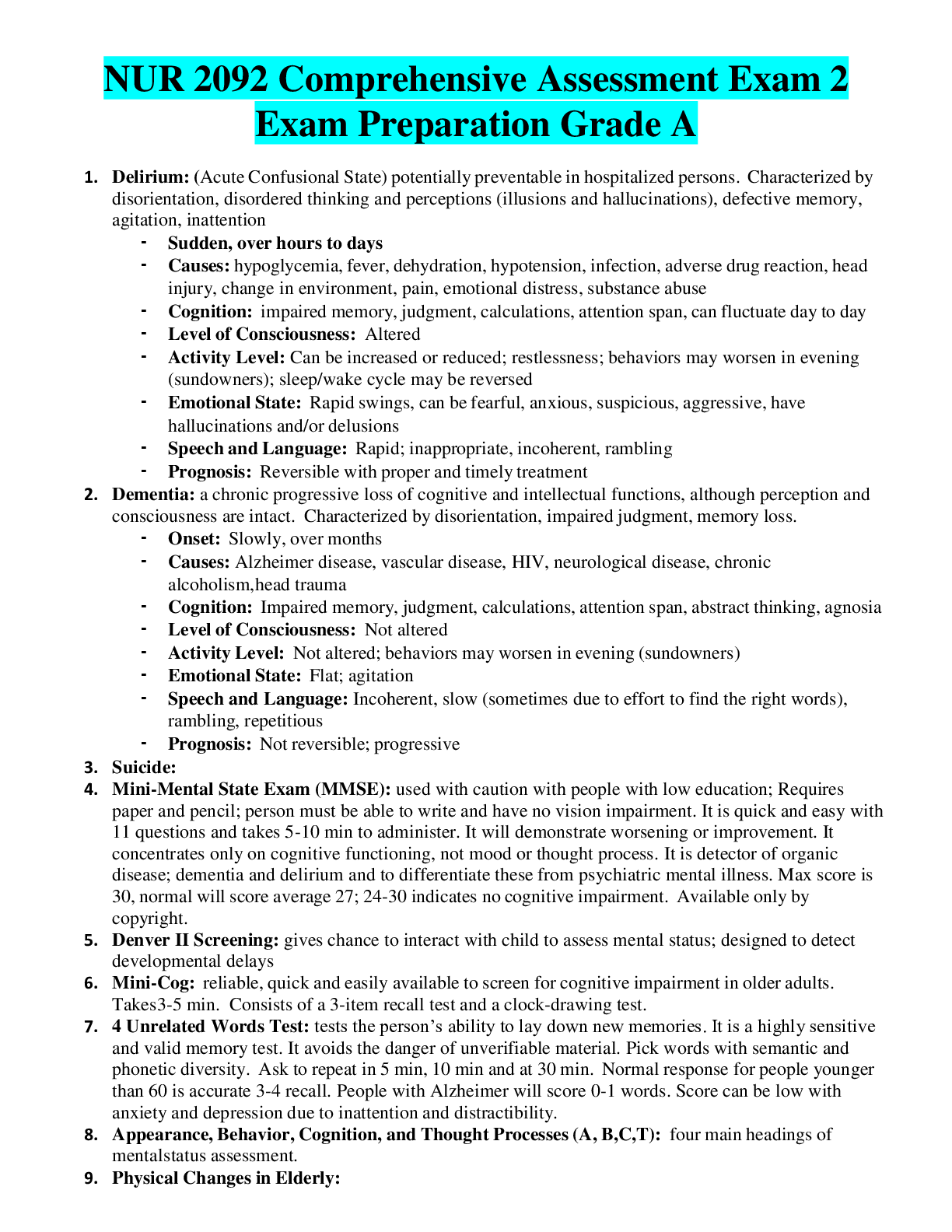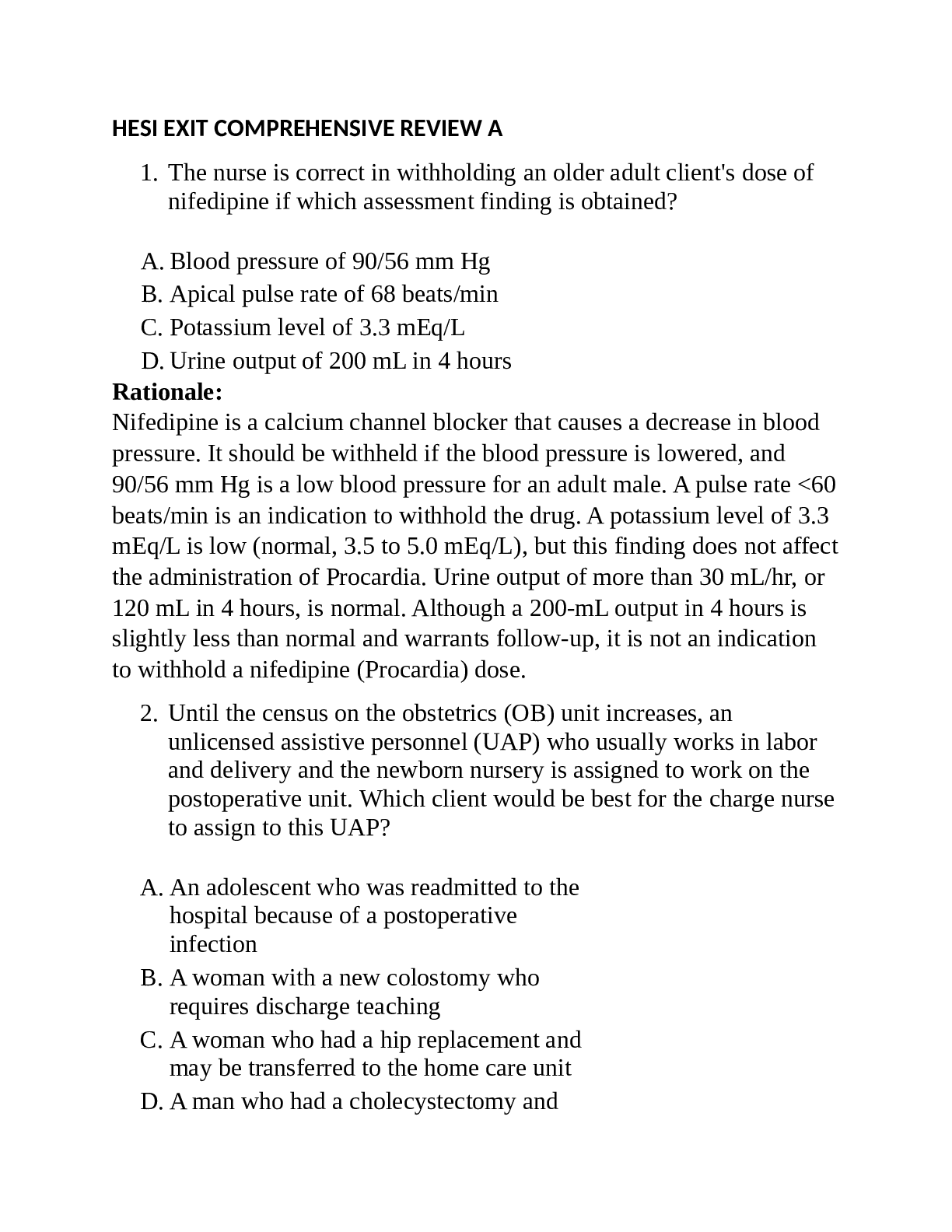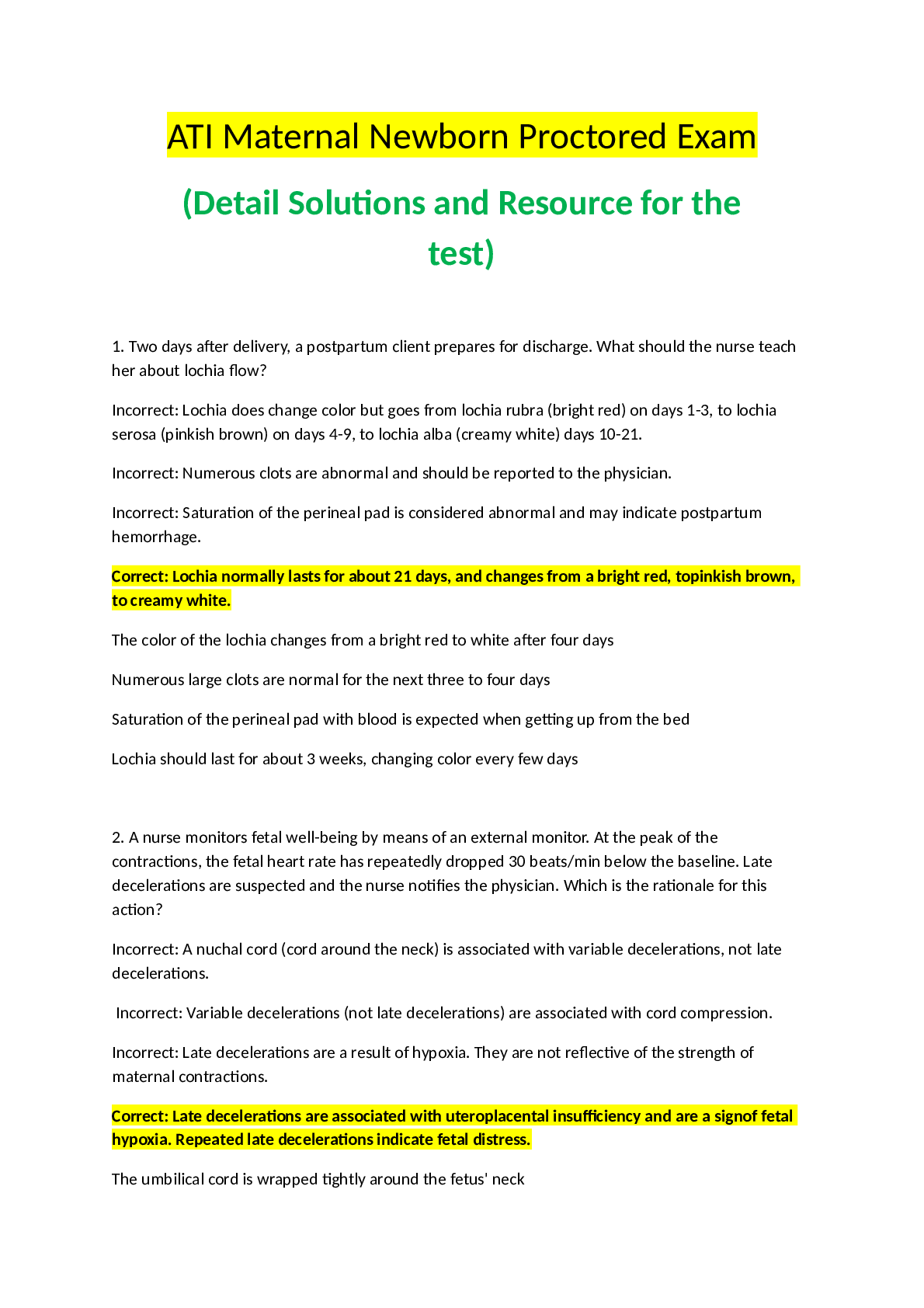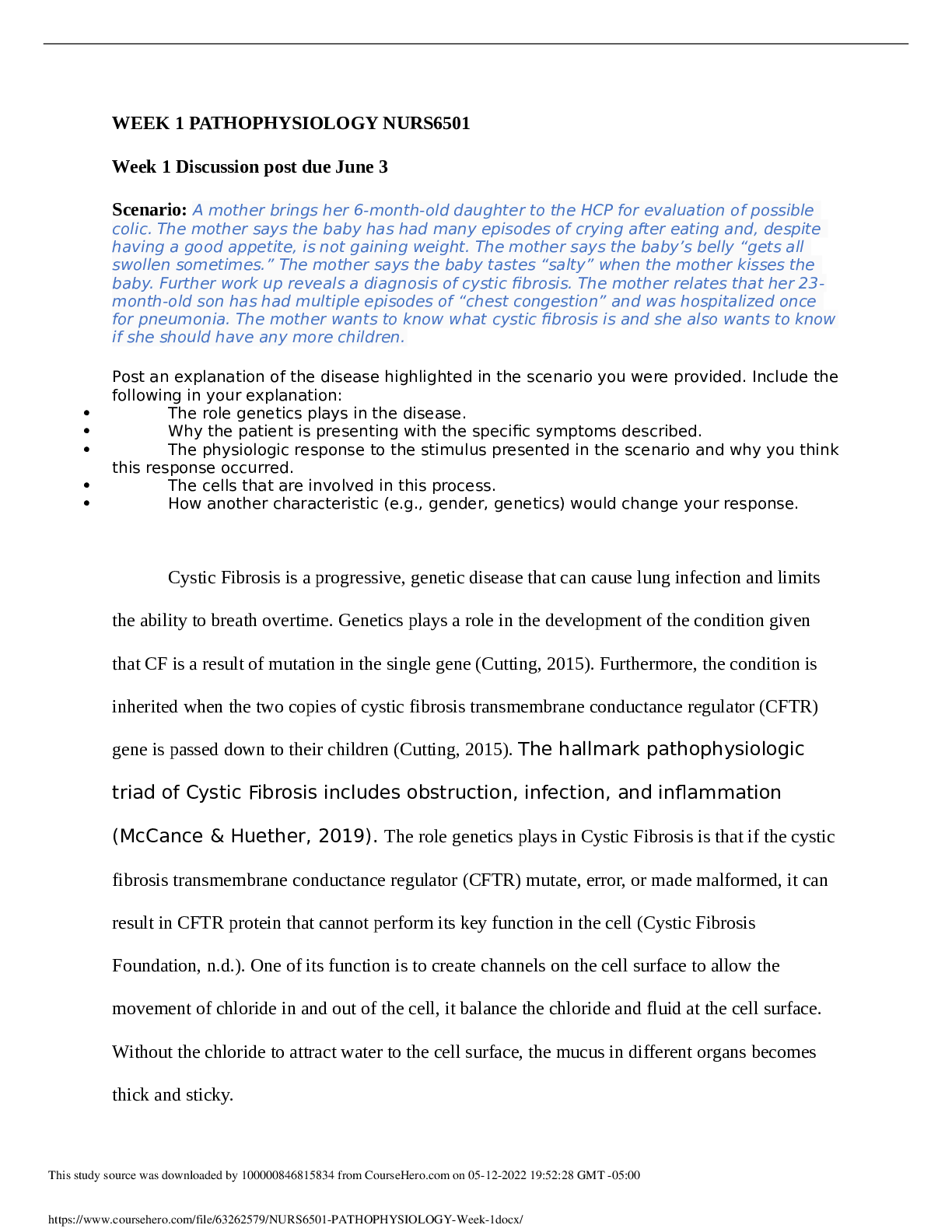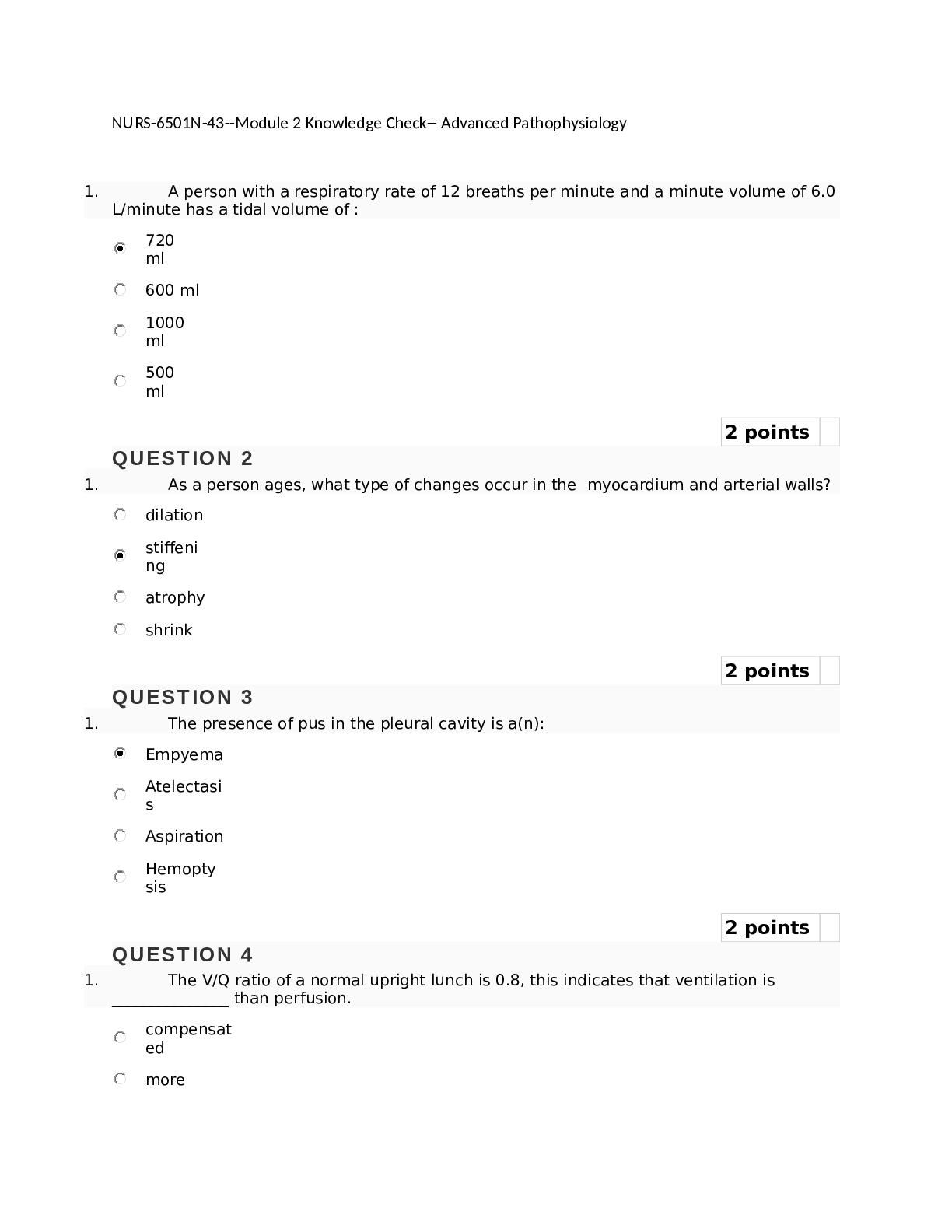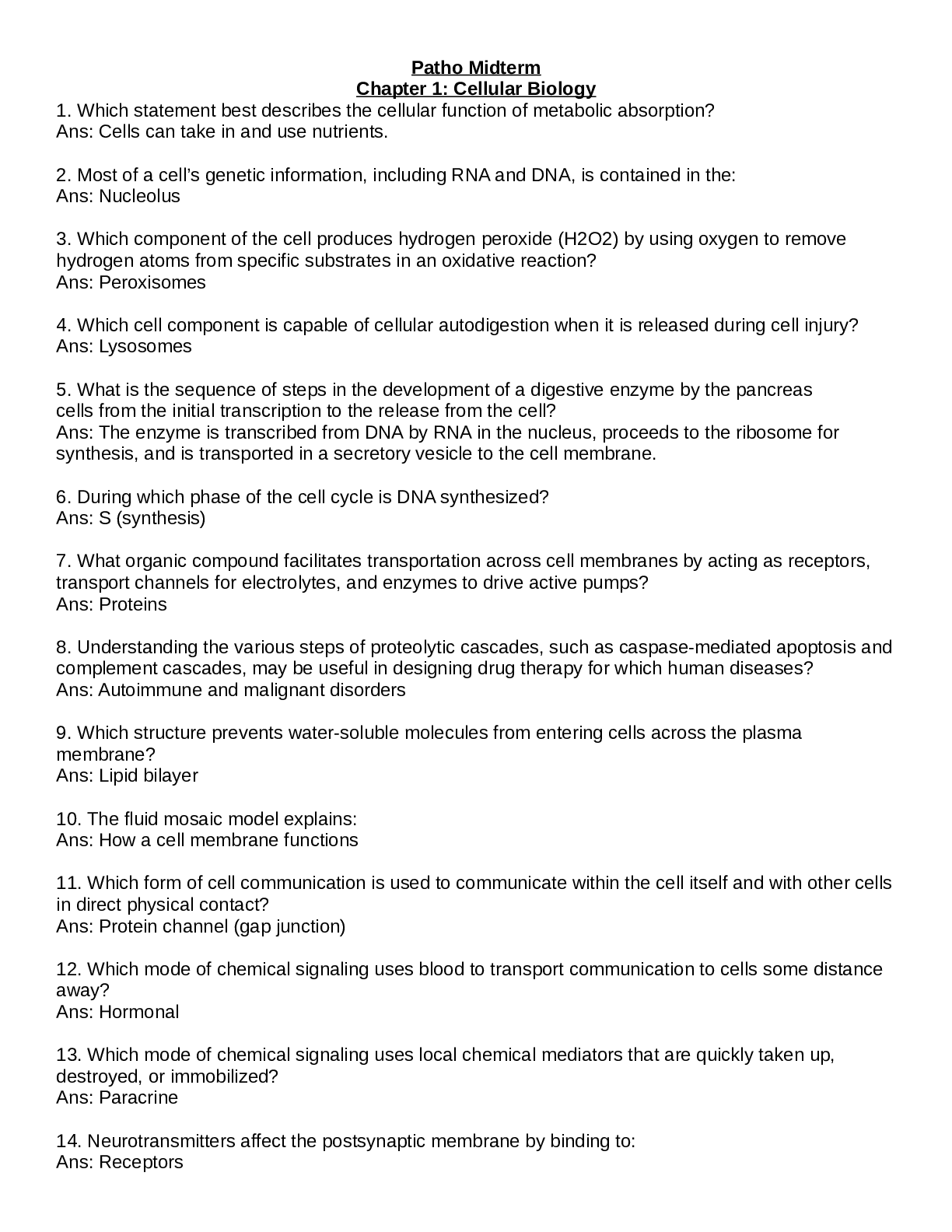*NURSING > EXAM > latest 2021 100% correct Module 4 Quiz Review: Global Community Health Concerns (All)
latest 2021 100% correct Module 4 Quiz Review: Global Community Health Concerns
Document Content and Description Below
Discuss the transmission of communicable diseases using the epidemiological triangle. Be able to apply examples, (Pgs. 290-292). Agent, Host, and Environment Agent Factor Four major categories of a... gents cause most infections and infectious disease: bacteria (e.g., Salmonella and E. coli), fungi (e.g., Aspergillus spp. and Candida spp.), parasites (e.g., helminthes and protozoa), and viruses (e.g., hepatitis A and B and HIV). Host Factor A human or animal host can harbor an infectious agent. The characteristics of the host that may influence the spread of disease are host resistance, immunity, herd immunity, and infectiousness of the host. Environment Factor The environment refers to everything that is external to the human host, including physical, biological, social, and cultural factors. Environment Factor The environment refers to everything that is external to the human host, including physical, biological, social, and cultural factors. 3. Discuss Infectious Disease interventions based on the levels of prevention. Be able to apply examples, (Pg 297) There are three levels of prevention in public health: primary, secondary, and tertiary. In prevention and control of infectious disease, primary prevention seeks to reduce the incidence of disease by preventing occurrence, and this effort is often assisted by the government. The goal of secondary prevention is to prevent the spread of infection and/or disease once it occurs. Activities center on rapid identification of potential contacts to a reported case. Contacts may be (1) identified as new cases and treated, or (2) determined to be possibly exposed but not diseased and appropriately treated with prophylaxis. Tertiary prevention works to reduce complications and disabilities through treatment and rehabilitation. Primary Prevention To prevent the occurrence of disease: • Responsible sexual behavior • Malaria chemoprophylaxis • Tetanus boosters, flu shots • Rabies pre-exposure immunization • Safe food-handling practices in the home • Repellants for preventing vector borne disease • Following childhood immunizations recommendations, and “no shots, no school” laws • Regulated and inspected municipal water supplies [Show More]
Last updated: 1 year ago
Preview 1 out of 7 pages
Instant download

Buy this document to get the full access instantly
Instant Download Access after purchase
Add to cartInstant download
Reviews( 0 )
Document information
Connected school, study & course
About the document
Uploaded On
Feb 11, 2021
Number of pages
7
Written in
Additional information
This document has been written for:
Uploaded
Feb 11, 2021
Downloads
0
Views
48

